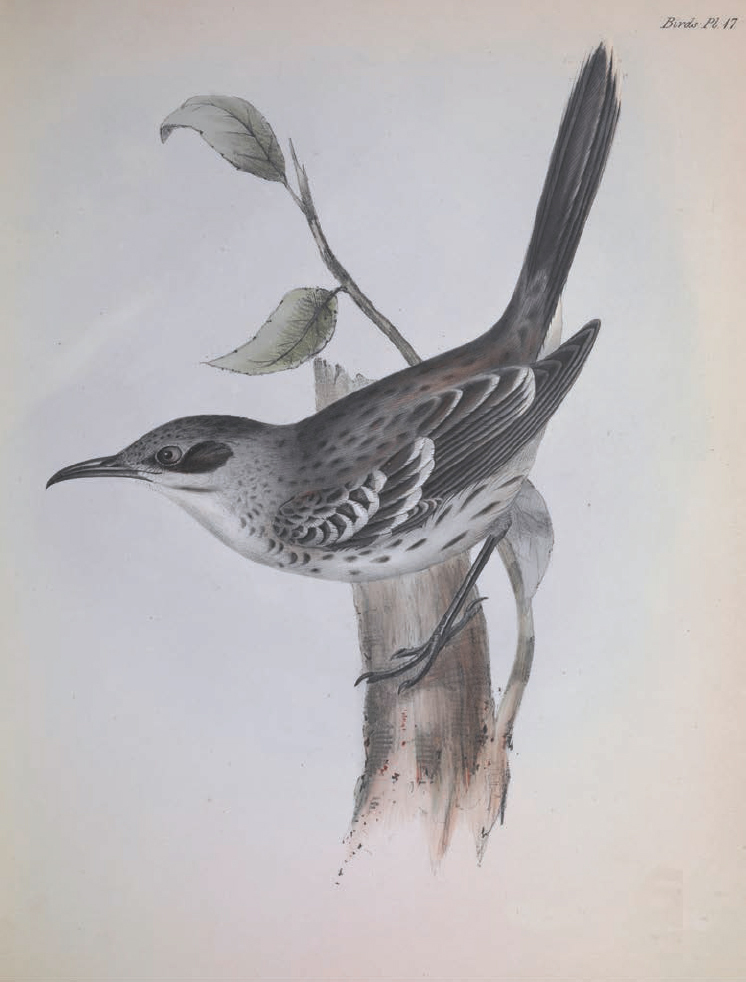22 : Gould’s paintings of Darwin’s finches and mockingbirds
1838
Gould’s illustration of San Cristóbal Mockingbird from his The Zoology of the Voyage of HMS Beagle Part III: Birds. He was the first to realise that many of Darwin’s specimens from different islands were related to each other, but it took the collector himself to realise and understand why.
Perhaps the most well-known example of modern day evolution in action is the group of seed-eating tanagers usually referred to as Darwin’s finches, all of which evolved from a single grassquit species within the last two million years.
Darwin collected many bird specimens from the Galápagos Islands, Ecuador, during the second voyage of HMS Beagle (1831-1836), and gave the whole lot to John Gould (1804-1881), taxidermist, ornithologist and bird artist in the museum at the Zoological Society of London, for identification and classification (see pages 48-49). Gould quickly realised that the finches were all closely related, even though Darwin had suggested that they were a mixed bag of New World blackbirds, a wren, ‘gross-bills’ and finches. He was also able to point out that Darwin’s mockingbirds were also separate species and different from, but closely related to, a mainland South American form.
Darwin had even neglected to label the birds with the names of the islands where they were collected, and so labelled specimens kept by others on the expedition had to be recalled. Once the specimens had been assigned to collection sites, it became apparent that all were restricted to particular islands, despite their often obvious affinities. This realisation was a big step towards Darwin’s conception of evolution by natural selection.
Gould painstakingly drew and painted these exotic but monochrome species in his detailed and naturalistic style, and published them between 1838 and 1842 in a part-work entitled The Zoology of the Voyage of H.M.S. Beagle Under the Command of Captain Fitzroy, R.N., during the Years 1832 to 1836. He soon went on to author and illustrate comprehensive and copiously illustrated works on the avifaunas of other countries. He published A Century of Birds from the Himalaya Mountain (1831-1832), a 20-part series with 80 colour plates, and perhaps his biggest innovation from a modern birder’s point of view, the five-volume The Birds of Europe (1837) which features his own lithographic work hand-coloured by Edward Lear and Gould’s wife, Elizabeth.
Gould’s true-to-life renditions of plants and birds, and the compilation of his work into regional volumes, helped form a tradition of naturalistic bird art that still informs modern monographs and field guides, and can be seen in the work of today’s foremost avian illustrators such as Ian Lewington, Killian Mullarney and Lars Jonsson, among a great many others.
